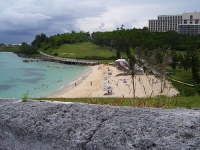
On the northern tip of St George's Island is Fort St Catherine, overlooking the beach where Sir George Somers and his shipwrecked crew came ashore in 1609. Bermuda's first governor, Richard Moore, who was a carpenter by trade, built a wooden fort on this site several years later. Today it is a massive fortification complete with a moat, drawbridge, ramparts and a maze of tunnels. Fort St Catherine is now used as a museum containing period weapons, colourful dioramas, a wax figure of Queen Elizabeth II, and replicas of Britain's crown jewels. An audiovisual presentation focuses on the many forts located around Bermuda.
Address : Retreat Hill Road
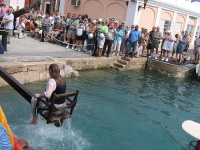
Many attractions are located around King's Square where a beautiful 18th century town hall overlooks the old pillory and stocks. The hall is no longer in use but does provide great photo opportunities. Located close by is the dunking stool where gossips and petty offenders were forced to endure the humiliation of being dunked in the harbour. A few minutes walk from here is the Old State House, Bermuda's first all-stone structure and oldest building, dating to 1620. Originally known as Sessions House, it was the first permanent home of the colonial assembly, which until then, had held their debates in St Peter's Church.
Address : Downtown, St George.
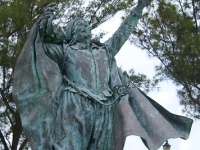
Located North of King's Square is Somers Garden, named after the colony's founder whose ship, Sea Venture, was wrecked off the island in 1609. Finding it a fairly nice place to be washed ashore, Sir George Somers built a replacement vessel from the local cedar, left some sailors behind to establish British claim to the islands and then headed home. He returned within the year but died shortly after arrival, leaving his heart, quite literally, on the island (his vital organs and entrails are in a small tomb in the Garden). The rest of his body, however, was sent back to England, as was customary at the time.
Address : Government Hill Road.
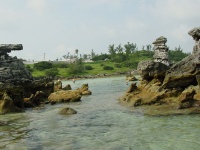
Somers Wharf is steeped in the varied and vibrant history of St. George's. The Wharf has commanded a bird's-eye view of the Old Town's fascinating maritime past, situated on the picturesque edge of St George's Harbour. Today, Somers's Wharf is a tastefully redeveloped area on the waterfront with a selection of shops and restaurants. The Carriage Museum has a collection of well-maintained carriages ranging from a dog-cart to a four-horse brake that ruled the roads until as recently as 1946 when cars were legalized. Situated nearby is Tobacco Bay, a good spot for swimming and snorkeling.
Address : Pennos Drive, St Georges Town.
Website : www.somerswharf.com
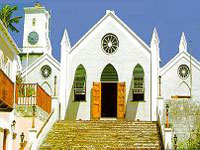
St Peter's Church is one of Bermuda's most cherished landmarks, and the oldest Anglican Church outside Britain. The original wooden structure was built in 1612 and its roof is thatched with palmetto. Among St Peter's many treasures are a mahogany altar, the St George's chalice that was presented in 1625, a Bible from 1594, Charles I silver, open cedar timber beams, beautiful chandeliers, and marble memorials to some of the Island's earliest governors. St Peter's served as the only public meeting place in Bermuda until the State House was built. The churchyard is also well worth walking around in, with tombstones telling stories of epidemics, shipwrecks and war.
Website : www.anglican.bm

Travel Guide powered by Word Travels, copyright © 2023 Globe Media Ltd. By its very nature information in this travel guide is subject to change at short notice and travellers are urged to verify information on which they're relying with the relevant authorities. Neither Globe Media Ltd nor Travel Vogue can accept any responsibility for any loss or inconvenience to any person as a result of information contained above.